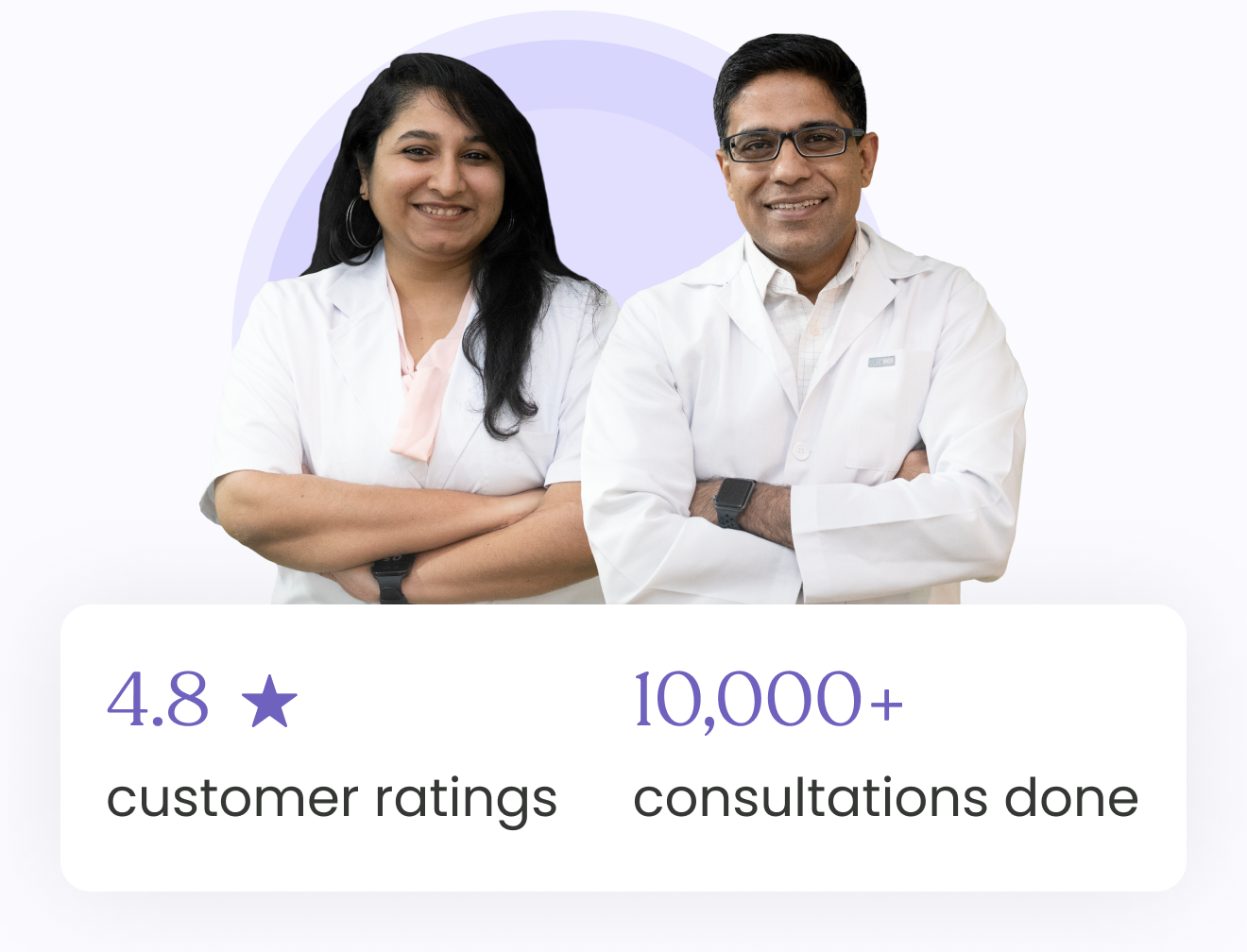Hepatitis C Effective Treatment Options

Allo Health is dedicated to personalized well-being, offering support and trusted information tailored to individual health goals. The platform emphasizes human-generated content, led by a distinguished medical team of experts, including physicians and sexual health specialists. Their commitment to credibility involves rigorous fact-checking, authoritative research, and continuous updates to ensure accurate, up-to-date information. Allo Health's unique approach goes beyond conventional platforms, providing expert-led insights and a continuous commitment to excellence, with user feedback playing a crucial role in shaping the platform's authoritative voice.

Dr Sanina Mansoor holds MBBS degree from Yenepoya university,Mangalore.She has 8 years of experience working as a medical officer at various health centres and medical colleges.
Why This Was Upated?
Our experts continually monitor the health and wellness space, and we update our articles when new information became available.
Updated on 26 February, 2025
- Article was updated as part of our commitment to diversity, equity, and inclusion.
"The following blog article provides general information and insights on various topics. However, it is important to note that the information presented is not intended as professional advice in any specific field or area. The content of this blog is for general educational and informational purposes only.
Book consultation
The content should not be interpreted as endorsement, recommendation, or guarantee of any product, service, or information mentioned. Readers are solely responsible for the decisions and actions they take based on the information provided in this blog. It is essential to exercise individual judgment, critical thinking, and personal responsibility when applying or implementing any information or suggestions discussed in the blog."
Hepatitis C has long been a formidable foe in the realm of public health, silently infecting millions worldwide and often leading to severe liver damage if left untreated. However, the landscape of hepatitis C treatment has undergone a remarkable transformation in recent years. What was once considered a chronic and potentially life-threatening condition now boasts a range of highly effective treatment options that offer hope for millions of individuals living with the virus.
In this comprehensive guide, we will delve into the world of hepatitis C treatment, exploring the evolution of therapies, breakthroughs in medical science, and the current state of effective treatment options. From traditional interferon-based regimens to revolutionary direct-acting antiviral drugs, we will navigate the journey towards achieving sustained virological response and ultimately, curing hepatitis C.
Understanding Hepatitis C
Before delving into treatment options, it’s essential to grasp the fundamentals of hepatitis C. Hepatitis C is a viral infection caused by the hepatitis C virus (HCV), which primarily affects the liver. The virus is transmitted through contact with infected blood, most commonly through shared needles during injection drug use, unsafe medical procedures, or from mother to baby during childbirth.
Once infected, many individuals remain asymptomatic for years or even decades, leading to a silent progression of liver damage. Chronic hepatitis C infection can result in serious complications such as liver cirrhosis, liver cancer, and end-stage liver disease. Therefore, early detection and effective treatment are critical to preventing long-term health consequences.
Historical Treatment Landscape
Historically, hepatitis C treatment was characterised by lengthy regimens of interferon-based therapies, often accompanied by ribavirin, an antiviral medication. These treatments were associated with significant side effects, including flu-like symptoms, depression, and anaemia, making them challenging for many patients to tolerate. Moreover, cure rates were modest, and treatment success often depended on factors such as genotype and the extent of liver damage.

Direct-Acting Antivirals (DAAs)
The landscape of hepatitis C treatment underwent a revolution with the development of direct-acting antiviral drugs (DAAs) in the early 21st century. Unlike interferon-based therapies, DAAs target specific steps in the viral replication cycle, resulting in higher efficacy and improved tolerability.
DAAs have transformed hepatitis C treatment in several key ways
- Improved Efficacy: DAAs boast cure rates exceeding 95%, even among patients with advanced liver disease or previous treatment failures. This represents a significant improvement over historical treatments and offers hope for achieving sustained virological response (SVR), defined as undetectable levels of HCV RNA in the blood six months after completing treatment.
- Shortened Treatment Duration: Unlike interferon-based therapies, which often required months of treatment, many DAA regimens offer shorter duration, typically ranging from 8 to 12 weeks. This not only improves patient adherence but also reduces the burden of treatment on healthcare systems.
- Minimal Side Effects: Compared to interferon-based therapies, DAAs are generally well-tolerated, with fewer adverse effects. Common side effects may include fatigue, headache, and nausea, but these are usually mild and transient.
- Pan-Genotypic Activity: One of the most significant advantages of DAAs is their pan-genotypic activity, meaning they are effective against all six major genotypes of the hepatitis C virus. This simplifies treatment decisions and expands access to care for patients worldwide.
Key Classes of Direct-Acting Antivirals
Direct-acting antiviral drugs belong to several classes, each targeting specific viral proteins essential for replication. Some of the key classes of DAAs include:
- NS3/4A Protease Inhibitors: These drugs inhibit the NS3/4A protease enzyme, essential for viral replication. Examples include glecaprevir and grazoprevir.
- NS5A Inhibitors: NS5A inhibitors block the NS5A protein, which plays a crucial role in viral assembly and replication. Common NS5A inhibitors include ledipasvir, daclatasvir, and velpatasvir.
- NS5B Polymerase Inhibitors: NS5B polymerase inhibitors interfere with the viral RNA polymerase, disrupting viral replication. Sofosbuvir, a widely used NS5B inhibitor, is a cornerstone of many DAA regimens.
Combination Therapy and Treatment Regimens
The effectiveness of DAAs is further enhanced when used in combination therapy, either as single-tablet regimens (STRs) or as part of multidrug regimens. Common combination therapies include:
- Sofosbuvir/Ledipasvir: This single-tablet regimen combines sofosbuvir, an NS5B inhibitor, with ledipasvir, an NS5A inhibitor. It is highly effective against genotype 1 hepatitis C and is typically administered once daily for 8 to 12 weeks.
- Glecaprevir/Pibrentasvir: Another single-tablet regimen, glecaprevir/pibrentasvir, offers pan-genotypic coverage and is approved for the treatment of all six major HCV genotypes. It is administered once daily for 8 to 12 weeks and is well-tolerated by most patients.
- Sofosbuvir/Velpatasvir/Voxilaprevir: This triple-combination regimen combines sofosbuvir, velpatasvir, and voxilaprevir, offering potent antiviral activity against treatment-resistant HCV strains. It is typically reserved for patients who have previously failed DAA therapy and may require a longer treatment duration.

Tailoring Treatment to Individual Patients
While DAAs have revolutionised hepatitis C treatment, it’s important to recognise that not all patients have the same treatment needs. Factors such as HCV genotype, the presence of liver cirrhosis, prior treatment history, and the presence of comorbidities must be taken into account when selecting the most appropriate regimen.

24x7 AI backed chatbot for all your sexual health related queries
Additionally, special considerations may be necessary for certain patient populations, such as:
- Patients with Decompensated Cirrhosis: Individuals with advanced liver cirrhosis may require closer monitoring and specialised treatment approaches to manage complications such as ascites, hepatic encephalopathy, and variceal bleeding.
- Patients with HIV Coinfection: Hepatitis C/HIV coinfection presents unique challenges due to potential drug interactions and overlapping toxicities. However, many DAAs are safe and effective for use in patients with HIV, making cure attainable for this population as well.
- Patients with Renal Impairment: Patients with renal impairment may require dose adjustments or alternative treatment regimens to ensure optimal efficacy and safety.
Cost Considerations and Access to Treatment
While DAAs have revolutionised hepatitis C treatment, access to these life-saving medications remains a significant challenge in many parts of the world. The high cost of DAAs has been a barrier to treatment access for millions of individuals, particularly in low- and middle-income countries where healthcare resources are limited.
Efforts to improve access to hepatitis C treatment include:
- Generic Licensing and Voluntary Licensing Agreements: Generic versions of DAAs have been licensed in several countries, significantly reducing the cost of treatment and expanding access to care.
- Negotiated Pricing Agreements: Some governments and organisations have negotiated pricing agreements with pharmaceutical companies to lower the cost of DAAs and improve affordability.
- Treatment Subsidies and Financing Mechanisms: Various financing mechanisms, such as government subsidies, health insurance coverage, and donor funding, have been utilised to make hepatitis C treatment more accessible to undeserved populations.
The landscape of hepatitis C treatment has undergone a remarkable transformation in recent years, thanks to the advent of direct-acting antiviral drugs. These highly effective medications offer hope for millions of individuals living with hepatitis C, providing the possibility of a cure with minimal side effects and shorter treatment duration. However, challenges remain in ensuring equitable access to treatment for all who need it, particularly in resource-limited settings. Efforts to address these challenges must be prioritised to achieve the goal of eliminating hepatitis C as a public health threat globally. With continued innovation, advocacy, and collaboration, we can unlock hope and usher in a future free from the burden of hepatitis C.








































